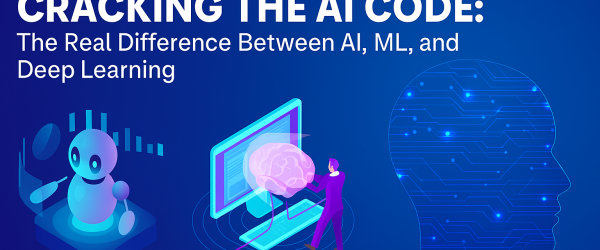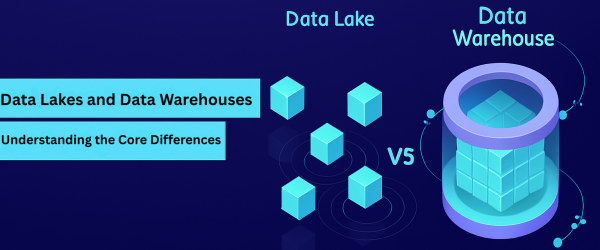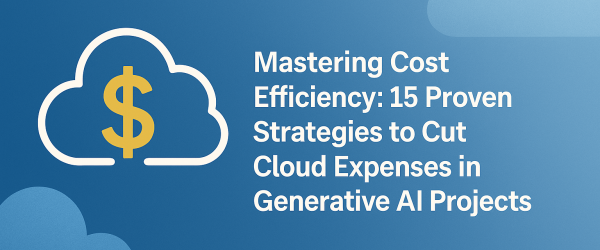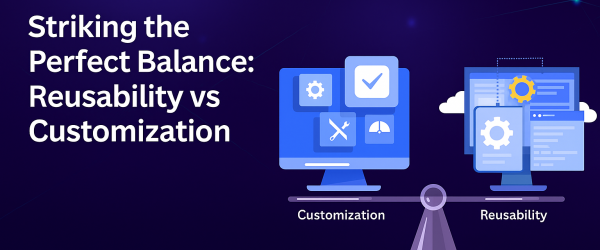Introduction
Adaptive Software Development (ASD) is a shining example of innovation in the ever-changing digital economy where agility is king. Yet, underneath it all is a revolutionary strategy that has the potential to completely alter software development norms. Although Agile approaches still rule the field, ASD’s usefulness in managing uncertainty and promoting continuous development is becoming more widely acknowledged.
ASD, often overshadowed by its more popular counterparts, stands as a testament to the essence of adaptability in software development. Contrary to the misconception that it may falter in the face of rapid changes, ASD emerges as a stalwart, challenging traditional beliefs and beckoning practitioners to embrace a paradigm shift.
History
Originating from the roots of Rapid Application Development (RAD), ASD was conceived through the collaborative efforts of visionaries Jim Highsmith and Sam Bayer. The pioneering work of Jim Highsmith and Sam Bayer on Rapid Application Development (RAD) in the early 1990s. This collaborative effort laid the groundwork for ASD’s philosophy of embracing uncertainty and fostering a culture of continuous learning. Highsmith and Bayer’s contributions paved the way for methodologies aligned with the Agile Manifesto’s core principles.
What is Adaptive Software Development?
ASD represents a paradigm shift in software development, emphasizing adaptability, and evolution throughout the development lifecycle. At its core, ASD embodies a minimalist ethos, prioritizing value delivery and organic evolution over rigid processes. Key principles such as emergence, feature-centric development, and risk-driven planning serve as guiding beacons for ASD practitioners. Organizations adopting ASD report higher levels of customer satisfaction and faster time-to-market compared to traditional approaches.
Three Phases of the Adaptive Life Cycle: Navigating the Terrain
The Adaptive Life Cycle, central to Adaptive Software Development (ASD), comprises three integral phases: Speculation, Collaboration, and Learning. Each phase plays a crucial role in guiding teams through the iterative process of software development, fostering adaptability, innovation, and continuous improvement.
1. Speculation:
The speculation phase serves as the inception point of the Adaptive Life Cycle, embodying the spirit of exploration and innovation. Here, teams embark on a journey of discovery, unburdened by rigid planning and predefined solutions. Rather, they welcome ambiguity, which fosters the growth of concepts and the natural unfolding of opportunities. The following traits define the speculative phase:
A. Initiating Exploration:
During the initiation stage of speculation, teams explore into the problem space, seeking to understand the needs and challenges at hand. This phase encourages creative thinking and brainstorming, laying the foundation for innovative solutions to emerge.
B. Adaptive Planning:
Unlike traditional planning approaches, adaptive planning in the speculation phase is fluid and dynamic. Teams adapt their plans based on emerging insights and changing requirements, prioritizing flexibility and responsiveness over rigid adherence to a predefined roadmap.
C. Embracing Innovation:
At its core, the speculation phase fosters a culture of experimentation and innovation. Teams are encouraged to explore unconventional ideas and embrace calculated risks, recognizing that innovation often arises from stepping into the unknown.
2. Collaboration:
Transitioning from speculation to collaboration, teams enter a phase marked by synergy and collective effort. Collaboration is the heartbeat of the Adaptive Life Cycle, where diverse perspectives converge to drive creativity and problem-solving. This phase encompasses:
A. Diverse Expertise:
Diversity is embraced at ASD as a spark for creativity in a collaborative setting. Teams make use of the distinct abilities and viewpoints of people from different fields, which promotes lively discussion and imaginative synergy. Teams that embrace diversity may approach complicated problems holistically and draw from a wide range of expertise and experience.
B. Principles of Collaboration:
The values of dedication, participation, trust, and respect are essential to the collaboration phase. These values cultivate an atmosphere that is conducive to cooperation, encouraging the free exchange of ideas, the acceptance of criticism, and the recognition of contributions. Teams that adhere to these values develop a collaborative atmosphere that stimulates innovation and promotes respect for one another.
C. Harnessing Emergence:
The collaboration phase embraces the concept of emergence, where innovative solutions arise organically from the collective intelligence of the team. By encouraging open dialogue and fostering an environment of psychological safety, teams can harness the power of emergence to address complex problems and adapt to evolving requirements. Through collaboration, teams can tap into the collective wisdom of the group, unlocking new insights and uncovering innovative solutions.
3. Learning:
As the Adaptive Life Cycle progresses, teams transition into the learning phase, where reflection and continuous improvement take center stage. Learning serves as the cornerstone of ASD, enabling teams to evolve and adapt in response to feedback and changing circumstances. This phase encompasses:
A. Reflective Practices:
In the learning phase, teams engage in reflective practices such as technical reviews, retrospectives, and knowledge sharing sessions. These practices provide opportunities for teams to evaluate their performance, identify areas for improvement, and celebrate successes. By fostering a culture of reflection, teams can harness the power of self-awareness to drive continuous growth and development.
B. User-Centric Feedback:
A key aspect of the learning phase is the integration of end-user feedback into the development process. By soliciting feedback from stakeholders and end-users, teams gain valuable insights into user needs, preferences, and pain points. This feedback serves as a guiding light, informing decision-making and shaping the direction of the product. By prioritizing user-centric feedback, teams can ensure that their solutions are aligned with user expectations and deliver maximum value.
C. Iterative Improvement:
The learning phase embodies the iterative nature of ASD, where teams embrace a cycle of experimentation, feedback, and adaptation. Through iterative improvement, teams continuously refine their processes, refine their solutions, and enhance their capabilities. By adopting a growth mindset and embracing the principles of continuous improvement, teams can navigate uncertainty with confidence, responding to challenges with resilience and agility.
Characteristics of Adaptive Software Development:
In addition to its phased approach, Adaptive Software Development (ASD) is distinguished by several key characteristics that underpin its effectiveness in dynamic software development environments. These characteristics encompass the ethos and guiding principles of ASD, shaping the way teams approach problem-solving and value delivery. Let’s explore some of the major characteristics of ASD:
Mission-Driven Approach: Aligning Vision with Action
ASD’s mission-driven approach ensures alignment between organizational objectives and development efforts, fostering a sense of purpose and direction. By prioritizing value delivery and customer satisfaction, ASD enables organizations to stay agile and responsive to evolving market demands.
Feature-Centric Development: Prioritizing Value Delivery
In ASD, feature-centric development ensures that the most valuable functionalities are delivered early and iteratively, maximizing stakeholder satisfaction. By continuously adapting to changing requirements and market dynamics, organizations can stay ahead of the competition and drive innovation.
Risk-Driven Planning: Embracing Uncertainty
ASD’s risk-driven planning approach encourages organizations to embrace uncertainty and leverage it as a catalyst for innovation. By identifying and mitigating risks early in the development lifecycle, teams can minimize project disruptions and enhance overall resilience.
Transparency and Collaboration: Cornerstones of Success
Transparency and collaboration are integral to ASD’s success, fostering open communication and collective decision-making. By creating a culture of trust and accountability, organizations can harness the collective intelligence of their teams and drive continuous improvement.
Comparison with Other Methodologies
To gain a deeper understanding of Adaptive Software Development (ASD), it’s essential to contrast it with other methodologies in the Agile landscape. While ASD shares common principles with Agile methodologies such as Scrum and Extreme Programming (XP), it also possesses distinct characteristics that set it apart. Let’s explore how ASD compares to other methodologies. Below, we’ll contrast Adaptive Software Development (ASD) with traditional and other Agile methodologies, shedding light on their key differences and similarities.
| Methodology | Key Characteristics | Strengths | Weaknesses |
|---|---|---|---|
| Adaptive Software Development | – Emphasis on continuous learning and adaptation | – Flexibility and adaptability | – Potential for increased baseline costs |
| – Feature-centric development | – Rapid development | – Challenges in documentation and planning | |
| – Risk-driven planning | – Culture of collaboration and innovation | – Dependency on experienced teams | |
| Scrum | – Iterative development cycles | – Transparency and accountability | – Emphasis on roles may lead to rigid team structures |
| – Sprint planning meetings | – Flexibility in responding to change | – Lack of focus on emergent requirements | |
| – Daily stand-up meetings | – Clear roles and responsibilities | – Potential for burnout due to intense sprint cycles | |
| Extreme Programming (XP) | – Test-driven development | – Focus on code quality and customer satisfaction | – Emphasis on pair programming may not suit all developers |
| – Continuous integration | – Emphasis on simplicity and feedback | – Lack of emphasis on project management | |
| – On-site customer presence | – Rapid feedback loop | – May require significant cultural shift within organizations | |
| Feature-Driven Development (FDD) | – Feature-driven approach | – Emphasis on domain modeling and scalability | – Complexity may increase with larger projects |
| – Iterative and incremental development | – Clear governance structure | – Dependency on skilled architects | |
| – Client-valued prioritization | – Predictability in project delivery | – Potential for scope creep and feature bloat |
By comparing ASD with methodologies such as Scrum, Extreme Programming (XP), and Feature-Driven Development (FDD), organizations can make informed decisions based on their specific needs and project requirements. While each methodology offers unique benefits, ASD stands out for its adaptability, focus on continuous learning, and risk-driven approach, making it a compelling choice for dynamic software development environments.
Strengths and Weaknesses of Adaptive Software Development:
Understanding the strengths and weaknesses of Adaptive Software Development (ASD) is essential for organizations considering its adoption. While ASD offers numerous benefits, it also presents challenges that must be addressed to ensure successful implementation. Let’s examine the strengths and weaknesses of ASD:
Strengths:
- Rapid Development: ASD facilitates rapid development by prioritizing the delivery of valuable features through iterative cycles. This agility enables teams to respond quickly to changing requirements and market dynamics, accelerating time-to-market and maximizing ROI.
- Shorter Iterations: ASD’s iterative approach allows for shorter development cycles, enabling teams to deliver incremental value to stakeholders at regular intervals. This iterative cadence fosters transparency, feedback, and collaboration, resulting in improved product quality and customer satisfaction.
- Culture of Collaboration and Innovation: ASD fosters a culture of collaboration and innovation, where cross-functional teams work together to solve complex problems and deliver innovative solutions. By embracing diverse perspectives and encouraging open dialogue, ASD creates an environment where creativity thrives, driving continuous improvement and competitive advantage.
Weaknesses:
- Need for Experienced Teams: Successful implementation of ASD requires skilled and experienced teams capable of embracing uncertainty and adapting to change. Organizations may face challenges in finding and retaining talent with the necessary expertise in ASD principles and practices, particularly in competitive talent markets.
- Challenges in Documentation: ASD’s focus on agility and flexibility may pose challenges in documentation, particularly for organizations with stringent regulatory or compliance requirements. Balancing the need for documentation with the principles of ASD can be a delicate task, requiring careful consideration and adaptation to organizational context.
- Increased Baseline Costs: While ASD offers benefits in terms of agility and innovation, it may require upfront investment in training, tooling, and infrastructure to support its adoption. Organizations must carefully evaluate the cost-benefit trade-offs of implementing ASD, considering factors such as project complexity, team size, and organizational readiness.
Insights for Enterprises
For enterprises considering ASD adoption, it’s essential to assess readiness and establish a framework for successful implementation. This includes fostering a culture of continuous improvement and innovation, investing in employee training and development, and creating an environment that values transparency, collaboration, and adaptability. By addressing potential pitfalls proactively and leveraging ASD’s strengths, organizations can position themselves for success in today’s fast-paced digital landscape.
Conclusion
In conclusion, our exploration of Adaptive Software Development (ASD) reveals a methodology that offers a unique approach to navigating the challenges of software development. From its origins in Rapid Application Development to its modern-day application as a flexible and adaptive framework, ASD has proven to be a valuable tool for teams seeking to thrive in dynamic environments.
Throughout our journey, we’ve uncovered the core principles and phases of the Adaptive Life Cycle, delved into the major characteristics of ASD, and compared it to other methodologies in the Agile landscape. We’ve examined its strengths and weaknesses, recognizing both its potential benefits and the challenges that organizations may face in its adoption.
Whether ASD is the right fit for your organization depends on various factors, including your team’s readiness for change, the nature of your projects, and your organizational culture. Regardless, our exploration of ASD serves as a reminder of the importance of flexibility, collaboration, and continuous learning in the ever-evolving world of software development.
As we conclude, we invite you to reflect on the insights gained from our exploration of ASD and consider how its principles and practices may apply to your own software development journey.
Thank you for reading. For continued insights and in-depth discussions, please follow our blogs at Ezeiatech.







